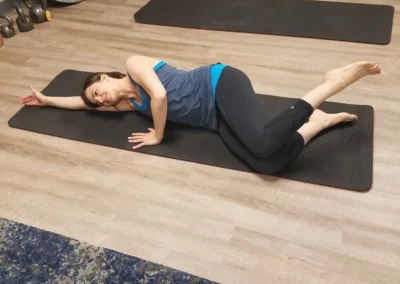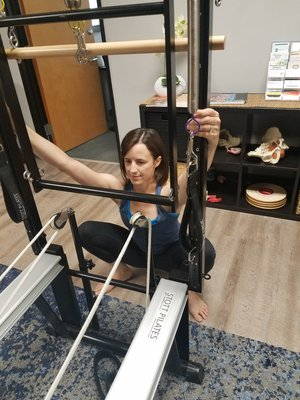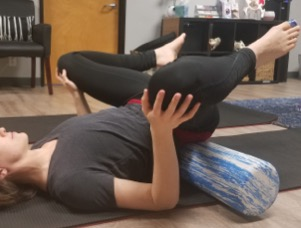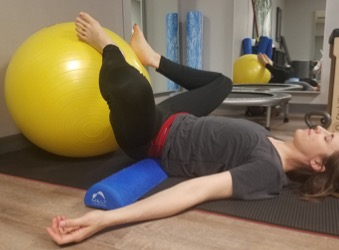Many forms of dance place unique demands on our bodies—including our pelvic floor. Movements in extreme positions involving our spine and pelvic bones, impact forces from repetitive jumping and landing, pressures from holding our abdominals or breath, and the required extreme turnout of the hips can cause the muscles in the pelvic floor to experience fatigue, excessive tension, or irritation. And, when the muscles of the pelvic floor are fatigued, irritated, or overly-shortened, they can’t function their best—sometimes, this can contribute to urinary leakage or pelvic pain.
So what are 5 ways dancers can help to keep the muscles of the pelvic floor happy? Here are some tips:
1. Breathe
Do you consistently work on drawing your abdominal wall in when you dance? Do you hold your breath or exert yourself while inhaling? These strategies, when employed without some balance to the system, can overload the pelvic floor muscles or cause them to be held tight more often than needed. The muscles of the pelvic floor work together with our diaphragm, and moving the diaphragm fully helps assure that the pelvic floor has adequate mobility to function well.
What’s my point? Find some time outside of class to let your belly relax and work on breathing. When you inhale, your belly should soften and rise, and your lower ribs should expand to the side. Your exhale should just happen without intense effort, letting your belly fall back to neutral. And, when dancing, try timing your breath with an inhale to prepare and an exhale on the effort.
2. Relax your pelvic floor
There are easy positions that can encourage the pelvic floor to soften and relax from the hard work of dancing and stabilizing. Deep squats, child’s pose, and happy baby poses are all easy ways to achieve this. If you try a deep squat, you want to be able to relax into it fully (holding a half squat is not relaxing for your pelvic floor muscles)—so, you can hold onto the barre at the studio or relax your back and pelvis against a wall or exercise ball. Focus on sending your breath toward your tailbone or visualize your sits bones spreading wide when you inhale.
Pictured below, from left to right, top to bottom: Happy Baby Modified 1, Happy Baby Modified 2, Deep Squat 1, and Deep Squat 2.
3. Move into hip internal rotation
If your dance form involves a lot of turnout in the hips, make sure you balance things out by allowing some time to rotate the other way. One of our deep turnout muscles of the hip is directly attached to the pelvic floor, so allowing length in this muscle can be a great way to take the load off. Now, everyone’s bony hip structure is different, so don’t force anything into pain. Lying on your side performing internal rotation with or without resistance or in quadruped with some internal rotation of the hips can be easy to achieve.

4. Nourish your body
Did you know that relative energy nutrient deficiency, low levels of Vitamin D, and low estrogen levels (which can occur if our periods are very irregular) are associated with increased pelvic floor symptoms like urinary incontinence? Dance tends to happen indoors, so make sure you grab a walk in the sun here and there. If you are working out and dancing intensely without much break, don’t forget the fuel you need—fats, complex carbohydrates, protein, and veggies—so you can keep your body fed and happy and your digestive system a flowin’ (nobody’s pelvic floor likes constipation!) If you need help figuring out optimal nutrition to fuel your dancing, consult a dietician or nutritionist that understands your performance demands.
5. Find a mindful practice
Let’s face it, dance is a stressful endeavor. Pressures can be high, rest periods are hard to come by, performance anxiety can drain us, and finding steady work can be a constant challenge. Did you know that the nerves that feed information to our pelvic floor are closely linked with our body’s stress management systems? Dialing down stress and anxiety with mindfulness or meditation has been shown to have a positive effect on things like urinary urgency or frequency and pelvic pain. There are lots of free apps you could download on your phone that can guide you through the basics. Finding a mindful moment should not over-complicate your life!








